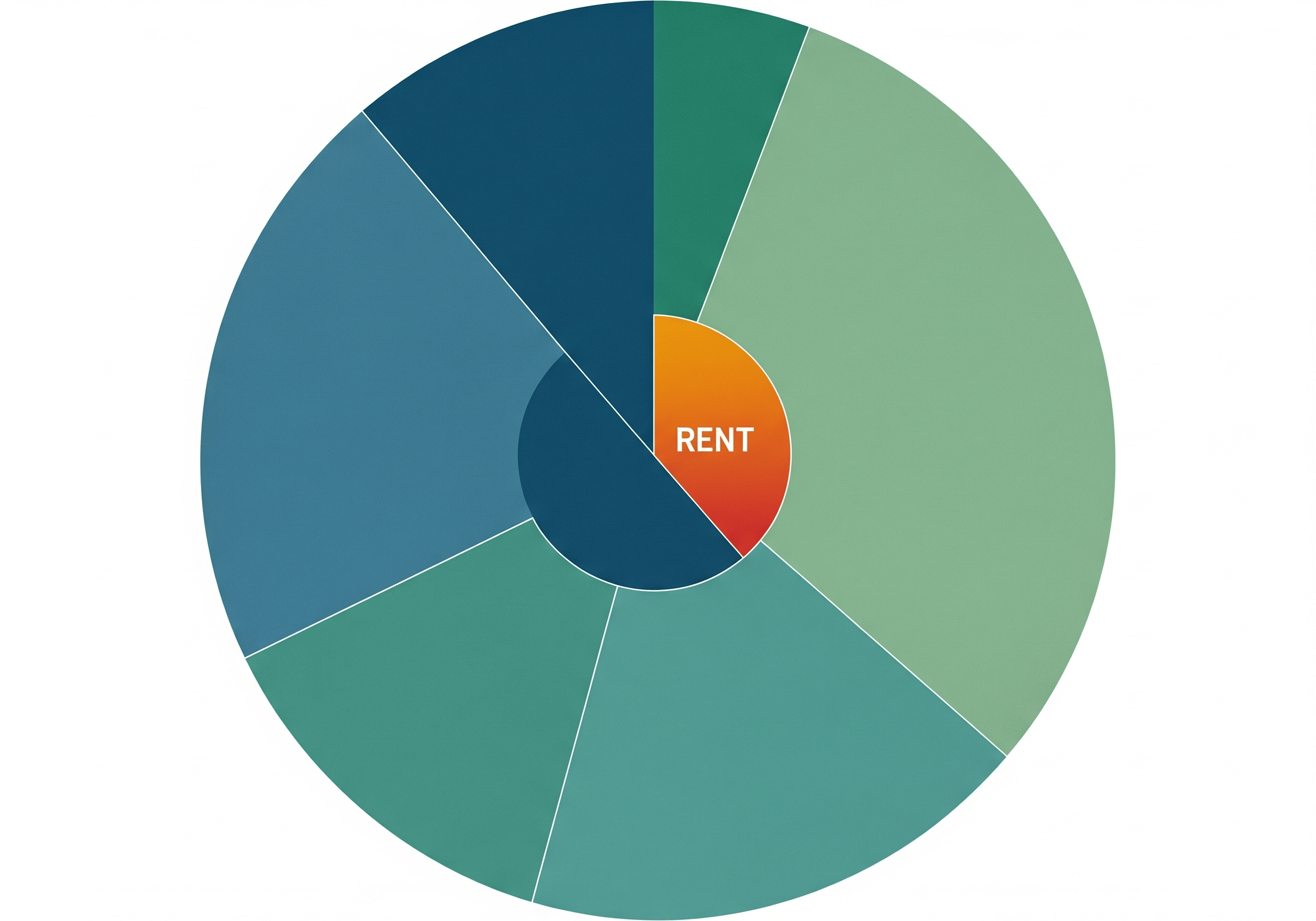How much of your paycheck should go toward rent? That's the question many renters are asking as housing costs rise while wages stall. The rent-to-income percentage - how much of your gross monthly income goes toward rent - is a simple yet powerful way to measure whether your rent is affordable. In 2025, rising rent burdens and changing financial realities have made this number more relevant than ever.
What Is Rent Percentage of Income?
Rent percentage of income is calculated by dividing your monthly rent by your gross monthly income and multiplying by 100. For example, if you earn $4,500 before taxes and your rent is $1,350, your rent percentage of income is 30%.
This metric is often used by landlords, budgeting tools, and government housing programs to evaluate affordability. You can try it for yourself, compare your situation using tools from the U.S. Department of Housing and Urban Development (HUD User).
Does the 30% Rule Still Apply?
The 30% rule has long been a standard benchmark. It originated from HUD's early guidelines, which defined anyone spending more than 30% of their income on housing as "cost-burdened" (Census). However, that threshold was created decades ago when wages were higher relative to housing costs and most people had less debt.
Today, with higher student loans, transportation costs, and healthcare expenses, sticking to 30% isn't always realistic. According to the Harvard Joint Center for Housing Studies, almost 50% of all U.S. renters now spend more than 30% of their income on rent. Over 12 million are classified as "severely cost-burdened," meaning their rent-to-income ratio exceeds 50%.
Rent Burden by City in 2025
Where you live plays a major role. According to a report from LiveNOW from FOX, recent housing data reveals wide differences across the country:
- Miami has a rent-to-income ratio of 41.6%
- New York City sits higher at 68.5%
- In contrast, Bismarck, North Dakota, and Sioux Falls, South Dakota average closer to 15-16%, which is well below the national threshold (FOX 5 DC).
To check affordability for your area, use HUD's Income Limits tool to see how your earnings compare with local housing costs.
Beyond the 30% Rule: Smarter Budgeting Models
More financial advisors are moving away from a strict 30% guideline. Instead, they suggest more flexible budgeting frameworks, such as:
- The 50/30/20 rule: 50% for needs (rent, groceries, utilities), 30% for wants, and 20% for savings or debt.
- The one-third model, which allows up to 33% of gross income for rent, if offset by low debt or high savings.
Using the CFPB's free budgeting worksheet from the Consumer Financial Protection Bureau can help map out what you can truly afford, especially if you have student debt or other large fixed expenses.
What Your Rent Percentage of Income Says About You
- Under 20%: Excellent. You have strong flexibility for savings and future goals.
- 20-30%: Generally safe. Keep an eye on other living expenses and debt.
- Above 30%: Risk of being cost-burdened. Consider adjusting your housing or budget.
- Over 50%: Severely cost-burdened. This may impact your ability to cover essential needs like healthcare and food.
You can also explore income-based housing programs via the U.S. Department of Housing & Urban Development if your rent burden is becoming unsustainable.

The 2025 Outlook: Know Your Number, Plan Ahead
This content is for informational purposes only and does not constitute financial advice. Please consult a licensed financial advisor or tax professional before making any financial decisions.
Understanding your rent percentage of income is more than a budgeting habit. It's a way to stay financially grounded in a volatile market. In 2025, most renters are paying more, but tools and resources exist to help navigate the pressure.
(The opinions expressed in this article are the author’s own and do not reflect the view of Sunrise Banks¹.)
References:
- HUD User – https://www.huduser.gov/
- Census – https://www.census.gov/newsroom/press-releases/2024/renter-households-cost-burdened-race.html
- Harvard Joint Center for Housing Studies – https://www.jchs.harvard.edu/sites/default/files/reports/files/Harvard_JCHS_Americas_Rental_Housing_2024.pdf
- LiveNOW from FOX – https://www.livenowfox.com/news/most-rent-burdened-cities-america-2022-2023
- FOX 5 DC – https://www.fox5dc.com/news/us-cities-most-affordable-rent-2025
- HUD's Income Limits tool – https://www.huduser.gov/portal/datasets/il.html
- Consumer Financial Protection Bureau – https://www.consumerfinance.gov/
- U.S. Department of Housing & Urban Development – https://www.usa.gov/agencies/u-s-department-of-housing-and-urban-development
1 Sunrise Banks:
Cheers is a financial technology company and not a bank. Banking services are provided by Sunrise Banks N.A. Your funds are FDIC insured up to $250,000 through Sunrise Banks, N.A., Member FDIC. Results are not guaranteed. Improvement in your credit score is dependent on your specific situation and financial behavior. Failure to make monthly minimum payments by the payment due date each month may result in delinquent payment reporting to credit bureaus, which may negatively impact your credit score. This product will not remove negative credit history from your credit report. All loans are subject to approval. Must be at least 18 years old, have a valid U.S. bank account, and a Social Security Number.















